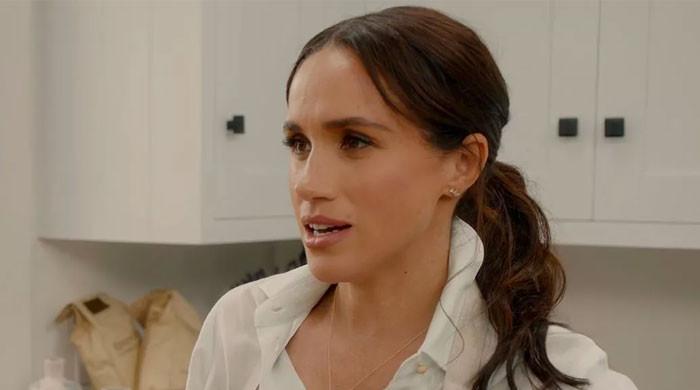Never Say Never AgainThroughout the ’60s, Sean Connery starred in five 007 movies: Dr. No, From Russia with Love, Goldfinger, Thunderball, and You Only Live Twice. He then passed the mantle to George Lazenby, who ended up being a one-and-done with On Her Majesty’s Secret Service.
Eon Productions knew their flagship franchise was in trouble, so they threw a bunch of money Sean Connery’s way, and he was back for 1971’s Diamonds Are Forever. After that, he said “never again” would he play the superspy. Eon now had Roger Moore in the role, so there’s was finally a long-term replacement for him in the role anyway.

But it turns out, he wasn’t done with the role as, a dozen years after Diamonds Are Forever hit the big screen, he returned for Warner Bros.’ Never Say Never Again (a title which came at least partially from Connery’s wife). Why wasn’t it an Eon production? It’s a long story.
How Did Never Say Never Again Come to Be?Never Say Never Again is essentially a remake of Thunderball. How is that possible, considering Eon owned the rights to that book and subsequent film adaptation? Before even Dr. No came to fruition, 007 creator Ian Fleming worked with producer Kevin McClory and screenwriter Jack Whittingham on crafting a Bond story for the big screen.
It was titled Longitude 78 West but was abandoned after debate over how much it would cost. After some reworking, Fleming turned it into the novel Thunderball, and neither McClory nor Whittingham received any credit.This resulted in a breach of copyright lawsuit which was ultimately settled in 1963, with McClory securing the rights.
When it came time for Eon to make their Thunderball movie, a deal was struck with McClory, but it’s not as if they got the rights to the work, they were just able to make a movie based off it.[RELATED: James Bond Films Starring Sean Connery Hit 4K Blu-ray With a Steelbook Box Set]A decade after that 1965 movie, McClory was interested in making another film based off that source material, and when Eon tried to stop it with a lawsuit, it was ruled that McClory and McClory alone owned the rights to the evil organization SPECTRE and the character Blofeld. The script submitted in the mid-’70s wasn’t a direct adaptation of Thunderball, however, so if it was going to make it to the big screen, it was going to need to stick even closer to the text of that book.
Connery was actually involved fairly early on (1978), to the point he had great say in who would write the new script. But just because he was involved doesn’t mean he was set to play the role. In fact, he said in an interview with the Sunday Express that when he “first worked on the script” he “had no thought of actually being in the film.
”That changed once producer Jack Schwarzman joined the project. After he personally asked Connery to play the role it was agreed, as long as Connery received $3 million, casting and script approval, and a percentage of the total profits. At the time, though, Connery was 52, so lines were added to the script to reference that.
And, interestingly enough, to get in shape, Connery trained with none other than Steven Seagal.There were other adjustments that had to be made, too. Specifically, to certain elements audiences had come to expect from a Bond film.
Because, while the film was free to use the plot of Thunderball, it couldn’t have anything that originated with Eon’s film adaptations, e.g. the opening gun barrel sequence (replaced instead with a bunch of 007 symbols on the screen) and Monty Norman’s iconic “James Bond Theme.
”The result is a product that kind of feels like a typical action-packed Bond adventure but also exists in an uncomfortable nebulous space somewhat removed from a typical Bond adventure. It’s easily the weakest of the Connery Bonds, and while it was financially successful, it couldn’t even match up with the same year’s Octopussy. It says a lot that the return of Sean Connery couldn’t even make as much money as the forgettable sixth Moore movie.
Worse yet, Never Say Never Again had a higher budget than Octopussy ($36 million as opposed to $27.5 million). Still, while the film may not have been a huge success overall, it certainly has a winning place in Bond history.
What do you think? Let us know in the comments.The post Sean Connery’s Final James Bond Movie Isn’t Actually Canon (And It’s A Remake) appeared first on ComicBook.com.
.
Entertainment

Sean Connery’s Final James Bond Movie Isn’t Actually Canon (And It’s A Remake)

Never Say Never AgainThroughout the ’60s, Sean Connery starred in five 007 movies: Dr. No, From Russia with Love, Goldfinger, Thunderball, and You Only Live Twice. He then passed the mantle to George Lazenby, who ended up being a one-and-done with On Her Majesty’s Secret Service. Eon Productions knew their flagship franchise was in trouble, so they threw [...]The post Sean Connery’s Final James Bond Movie Isn’t Actually Canon (And It’s A Remake) appeared first on ComicBook.com.














